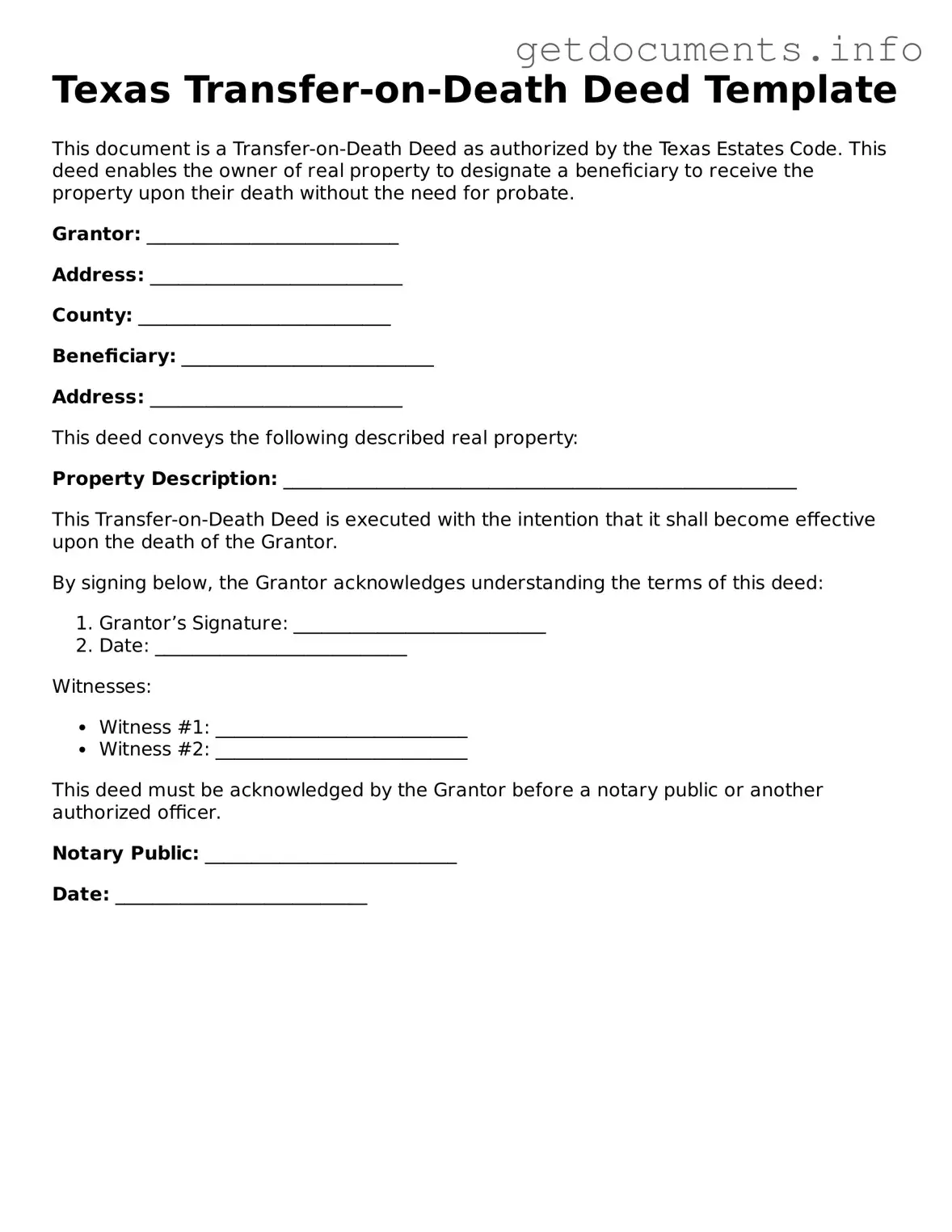Free Transfer-on-Death Deed Template for Texas
The Texas Transfer-on-Death Deed form allows property owners to designate beneficiaries who will inherit their property upon their death, without the need for probate. This straightforward legal tool simplifies the transfer process and ensures that your wishes are honored. To get started, fill out the form by clicking the button below.
Access Transfer-on-Death Deed Editor
